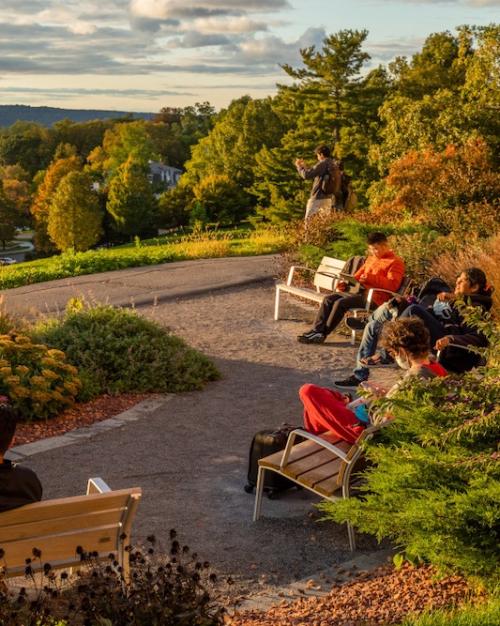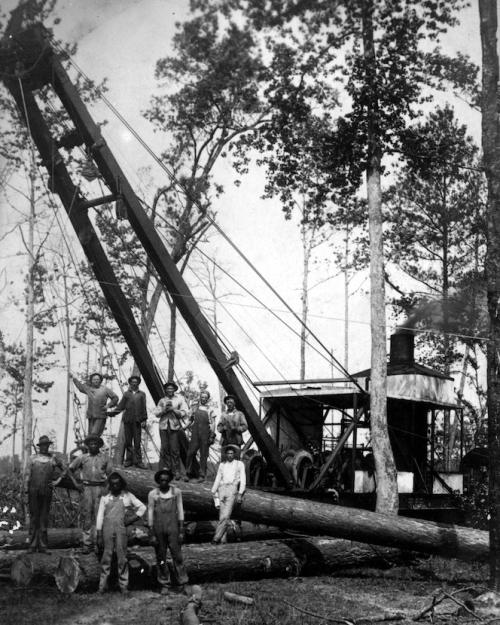In the early 20th century, lumber workers in the Piney Woods region of the American South banded together across racial lines to form the Brotherhood of Timber Workers (BTW) union.
“At a time of Jim Crow segregation, the BTW brought together people across polarized racial lines. But these lines are not as polarized as we necessarily think,” said Kendall Gordon Artz, Klarman Postdoctoral Fellow in Africana studies in the College of Arts and Sciences. “The BTW had to overcome a lot more nuances and racial meanings than simply Black and white.”
In “The Redbones are Running the Union: Precarious Whiteness and Racial Contingency in the Lumber War,” published in American Quarterly in September, Artz argues that racial nuances local to western Louisiana played a big role in the 1910s Lumber War – even though company records, government census data or even newspaper reporting don’t show it. He wants to push beyond the assumption – one replicated by scholars – that company rosters and state records hold all there is to know about racial expression.
During the Lumber War, company management routinely called workers and union leaders “Redbone,” a term with specific racial meaning in western Louisiana. Official company rosters only listed three race categories (white, Black and Mexican) and state census data did the same. But management knew that leveling the term “Redbone” against workers and union leaders essentially stripped them of precious and precarious white status – and they did so liberally.
Previous Lumber War scholarship has focused only on Black and white, thereby reproducing the reductive classification techniques of employers and the state, Artz argues.
“In reality, race is much more fluid on an everyday basis,” he said.
In western Louisiana, “Redbone” refers to someone who looks white but has mixed-race ancestry, Artz said. Today, people will describe themselves as “Redbone” and express pride in their heritage, he said. But at the time of the Lumber War, no one was using the term to describe themselves.
“'Redbone’ was purely pejorative because Louisiana had a strict color line,” Artz said. “For 150 years, this term has been used in portions of western Louisiana to talk about white people who look white, but don’t behave the way white people are supposed to behave.”
Through research in archives in Texas and Louisiana, Artz found that during the expansion of the lumber industry, the term “Redbones” appeared frequently in places such as company correspondence and federal strike investigation reports. Lumber baron John Kerby deployed terms like “Redbone” and “roughneck” to talk about the white workers who weren’t “behaving white” by joining the union.
BTW leader Arthur Lee Emerson was called a “Redbone” by company gunmen who beat him within an inch of his life in 1913. “Describing Emerson as a ‘Redbone’ was thus an explicit redefinition of his racial belonging, seemingly proved by his behaviors and union affiliation rather than by any geographical, ancestral or phenotypical markers,” Artz wrote.
A 1913 magazine article reported that two former union members dropped out because they “couldn’t stand for the ‘Redbones’ that were running it.”
Because big lumber was the first industry to enter the Piney Woods region (which includes western Louisiana, as well as parts of Arkansas, Oklahoma and Texas), lumber companies became associated with modernity and civilization there, building homes, towns and amenities, Artz said. Wages, job opportunities and access to things like swimming pools, plumbing and electricity, were often tied to race during this time.
“People’s ties to the company towns became a measure of how modern they were. This idea of modernity was expressed through racial language,” Artz said. “People in the company towns were considered pure white and the vanguard of this industrial capitalism that was taking over the Piney Woods. Whereas the people who worked further afield, out in the woods, were seen as backwards and rural. This term ‘Redbone’ was used to describe that.”
The same thing was happening for Black workers, he said. People working in the mill town were seen as respectable, whereas people further afield dealt with racial slurs and other derogatory descriptions of their work.
The BTW did an incredible job overcoming racial differences that were created in large part by the companies, Artz said, by accepting everyone – not just people of different races but people working in different places – to build an interracial union.
“What I’m adding to the story is that they were able to overcome the race-baiting tactics of the companies to make this coalition,” Artz said. “And one of those tactics was saying people who join the union are not truly white or people who join the union are not authentically Black. So, what the BTW had to do is say, ‘not only are the people who join this union both white and Black; these are exemplary members of our communities, these are exemplary members of the working class.’”




